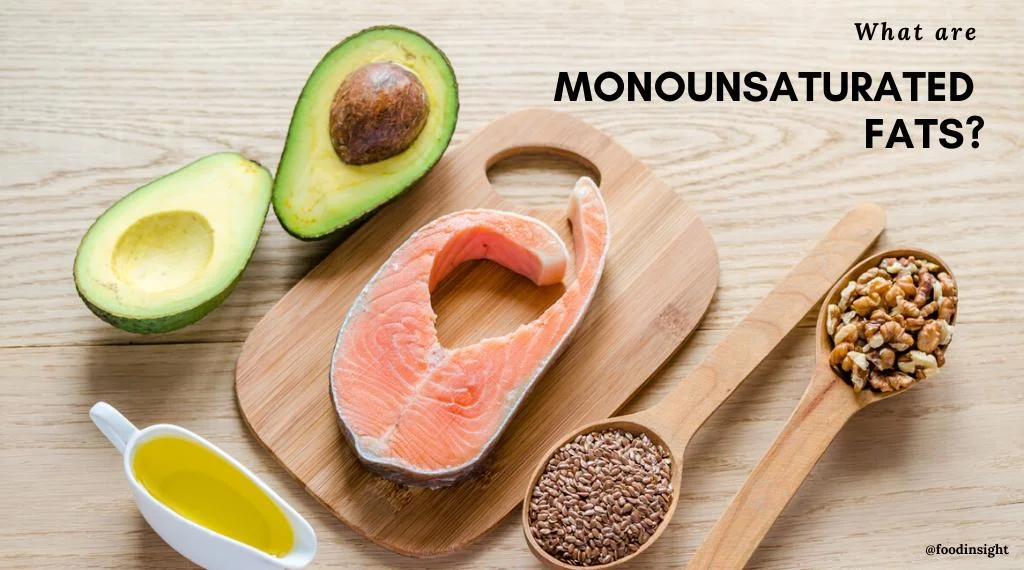
It wasn’t long ago that dietary fat was relegated to the “bad guys” side of nutrition commentary. “Eating fat makes you fat” was a commonly held belief, and many people opted for low- or non-fat versions of foods whenever possible. However, in recent years, research on dietary fats and their impact on health has advanced considerably. The misperception that all fats are unhealthy is slowly being corrected as scientific evidence about the most healthful types of fat is more widely communicated. As consumer understanding and interest in dietary fats increase, questions are evolving, from “How do I eat less fat?” to “How do I eat the healthier kind of fat?” In this article, we’ll discuss one type of fat that’s known to be beneficial to our health: monounsaturated fats.
A brief lesson on fat terminology
Let’s step back for a minute to talk about what makes a fat “monounsaturated.” The terms “saturated” and “unsaturated” refer to the chemical structure of fatty acids, which are the basic structures of most dietary fats. Fats are made up of a chain of carbon atoms that are connected to hydrogen atoms. Differences in the number of carbon atoms in the chain, how they’re bonded to hydrogen, and the shape of the chain are what distinguishes one type of fatty acid from another.
A saturated fatty acid has the maximum number of hydrogen atoms—the chain is “saturated” with hydrogen. Unsaturated fats have less than the maximum amount of hydrogens because two carbons are double-bonded to each other. Thus, “unsaturated” fats aren’t saturated with hydrogens. There are two types of unsaturated fats: monounsatured (MUFA) and polyunsaturated (PUFA). MUFAs have just one carbon double-bond (“mono” = one), while PUFA have more than one (“poly” = many).
There are key differences between saturated and unsaturated fats in their form, food sources and effects on our health. Fat sources that are higher in saturated fats, like butter, lard and coconut oil, tend to be solid at room temperature because their fatty acid chains are straight and can pack tightly together. In contrast, unsaturated fats tend to have a bend in their structure due to the carbon double-bond(s), similar to how an arm bends at the elbow. This means they can’t pack as tightly. Thus, things that have a higher proportion of unsaturated fats, like cooking oils, are usually liquid at room temperature. This is why olive oil is easily pourable at the same temperature that a stick of butter needs to be cut with a knife. Lastly, partially hydrogenated oils (man-made trans fats) are formed when hydrogen is added to unsaturated oils, which causes the oil to remain solid at room temperature. Partially hydrogenated oils have been found to be directly harmful to human health, and most of them have been removed from the food supply.
Monounsaturated fats and health
Fats play many essential roles in our bodies. To name just a few, they support the structure of each of our cells, provide energy, help us absorb fat-soluble vitamins, insulate nerve cells, and are involved in many physiological processes like blood clotting, wound healing and inflammation.
A strong body of evidence has concluded that MUFAs can have an especially positive impact on cardiovascular health when used to replace saturated and trans fats in the diet. These effects include helping to lower LDL (“bad”) cholesterol, while maintaining HDL (“good”) cholesterol and improving blood vessel function. Observational studies have shown that replacing 5% of energy from saturated fat with MUFAs has been associated with a 15% lower risk of coronary heart disease and that replacement of saturated fat with MUFAs (mainly from plant sources) decreases CHD risk.
Recommended intakes
Since our bodies can make some monounsaturated fatty acids from other types of fat, they are not considered to be essential parts of the diet and there is no formal recommended daily intake. There is also no tolerable upper intake level (UL). The National Academies of Science, Engineering, and Medicine (formerly the Institute of Medicine) have determined that healthy Americans should consume about 20–35% of their calories from fat. However, the type of fat we eat impacts our health more than the amount of fat we eat. Because most Americans tend to get too much saturated fat and not enough unsaturated fat, the emphasis should be on replacing foods high in saturated fats with foods that have more unsaturated fats, rather than reducing total fat intake.
Food sources of monounsaturated fats
Monounsaturated fats are found in both plant and animal foods. All foods that contain fat have more than one type of fatty acid—they each contain a variety. Foods with higher MUFA content include plant-derived oils (especially olive and canola oils, but also safflower, sunflower, peanut and sesame), avocados, olives, nuts, nut butters and seeds. MUFAs are a key part of the Mediterranean diet, of which olive oil is a staple food. Animal-derived MUFAs are found in meats, fish and dairy foods like yogurt and milk.


